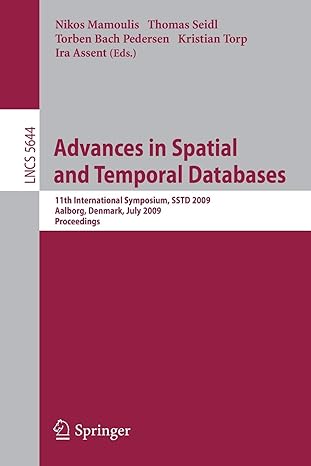The original Unix operating system was created at
Question 1 options:
| | |
| | |
| | | 3) | University of California, Berkeley | |
| | |
Linux operating system source code is mostly written in
Question 2 options:
A C program begins execution in the ___ function
Question 3 options:
Library functions in Linux systems
Question 4 options:
| | | 1) | are part of the virtual file system | |
| | | 2) | act as an interface between user programs and the operating system to enable system calls | |
| | | 3) | are part of interrupt handling routines | |
| | | 4) | are part of process scheduling code within the operating system | |
When one function in a C program calls another function,
Question 5 options:
| | | 1) | the process stack grows in size | |
| | | 2) | the process stack reduces in size | |
| | | 3) | the process stack size remains unchanged | |
| | | 4) | the text segment of the process is updated | |
In Linux, when a process P1 issues the fork system call,
Question 6 options:
| | | 1) | a child process of P1 is created and the child and the parent share nothing | |
| | | 2) | a child process of P1 is created and the child is almost a clone of the parent | |
| | | 3) | a child process of P1 is created and the child is the image of some utility program the user wants to execute | |
| | | 4) | the process terminates immediately | |
Question 7: If a user enters the command
sort at the bash shell prompt,
Question 7 options:
| | | 1) | the shell replaces itself with the code of the sort program | |
| | | 2) | the shell fetches the code of the sort program from disk and runs it | |
| | | 3) | the shell forks a child process and the child process replaces itself with the code of the sort program | |
| | | 4) | the shell terminates and the sort program takes over as the new shell | |
Which of the following commands redirects the input of an imaginary utility named newutil in Linux?
Question 8 options:
In Linux, which of the following commands runs a process p1 in the background?
Question 9 options:
The first three entries (0, 1, and 2) of the file descriptor table for any Linux process point to
Question 10 options:
| | | 1) | standard error, standard output, and standard input, respectively | |
| | | 2) | standard input, standard output, and standard error, respectively | |
| | | 3) | standard error, standard input, and standard output, respectively | |
| | | 4) | standard output, standard error, and standard input, respectively | |






